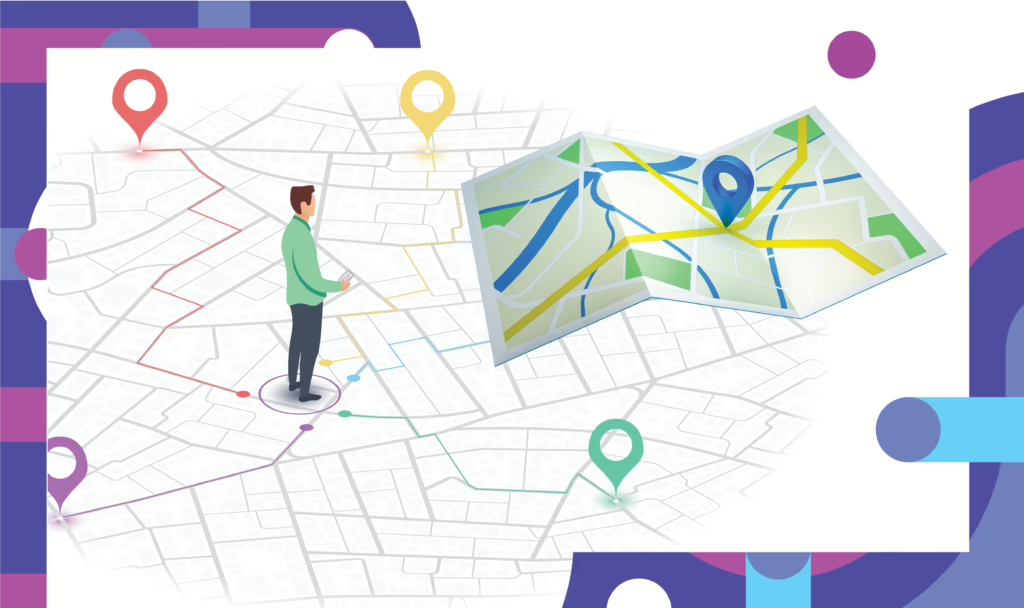
Forget the One-Way Street: Embracing the Serendipity of Today’s Customer Journey
When we think of the “customer journey,” we typically visualize it as a largely straight, one-way street. Customers pass through stages of discovery, research, comparison, decision-making, purchasing, and post- purchase behaviors. If illustrated, it would be on a simple timeline.
However, today’s customer experience has become a less predictable path. Customers might meander, jump in and out of the journey, and switch between steps. They might also simply get bored with a basic journey and want something more engaging. As a result, today’s marketers are looking for interesting options to adapt to this evolving landscape.
The Non-Linear Customer Journey
Customers have more access to information across multiple—often integrated and interconnected— channels. Therefore, they get their information from a wider variety of sources, including social media, reviews, and word-of-mouth, and they’re increasingly focused on convenience and personalization.
Research from Gartner found that B2B buyers are more likely to look at purchasing as a set of three jobs: finding decision-enabling information, validating the information acquired, and driving alignment between key internal stakeholders. Rather than handling these one at a time, however, most buyers experience these processes concurrently.
As a result, we’re seeing more non-linear customer journey behaviors or “interrupted” journeys. Examples might include:
- Researching a product online but purchasing it in-store
- Following a brand on social media long before making a purchase
- Engaging with multiple touchpoints simultaneously
The trick is to lean into this increased variety of paths, potentially even designing your customer experience to embrace it in advance. Experts from the Harvard Business Review suggest thinking of customer journey design as a matrix on two axes: predictable to unpredictable and effortless to effortful. When your service or product lends itself to being more unpredictable, like a recreational or fitness product or an entertainment product like a game or app, it presents an opportunity to embrace the non-linear opportunity. It allows you to better engage customers, keep them coming back for more growth and exciting news, and let them take the reins.
Strategies for Marketers
Whether the non-linear is built into your journey from the beginning or you’re having to adapt, it’s certainly a different set of challenges than you might expect, but these challenges come with opportunities, too:
Challenges:
- Difficulty in predicting customer behavior
- Measuring ROI across fragmented touchpoints
- Maintaining consistency in messaging across channels
Opportunities:
- Creating seamless omnichannel experiences
- Leveraging data to understand individual customer preferences
- Building stronger relationships through personalized engagement
A handful of key strategies can help your team better navigate a non-linear journey and its unique, shifting characteristics, as follows:
- Focus on omnichannel integration. Non- linear journeys are often deeply entwined with omnichannel customer experiences, such as following a brand long before purchasing or jumping out to view reviews or influencer content. Ensure a cohesive experience across all channels to help bridge potential gaps between online research and offline purchases.
- Embrace agility. “Agility” is a buzzword we often hear, but it is truly critical regarding the unpredictability of non-linear journeys. Adapt campaigns to better meet customers where they currently are, with testing and iterating based on real-time feedback to leave a better impression at any stage.
- Leverage data and analytics. Map out key touchpoints to better understand customer behavior and priorities and use algorithms or AI-powered analytics to predict next steps and offer tailored recommendations. This also requires rethinking success metrics beyond linear attributions models and toward things like micro-conversions, interactions, engagement, and loyalty.
- Prioritize a customer-centric experience. Perhaps most critical is listening to customer needs and preferences and then designing experiences that provide genuine value at every touchpoint. With non-linear journeys, the key value isn’t just at the end; customers want to feel like they’ve attained something at every stage.
The future of customer journey mapping requires this flexibility, willingness to adapt to new preferences and technologies, and view of the journey as something active and evolving. Community-driven marketing and brand advocacy help encourage people to check out your brand, but only if they’re first impressed with what they see.
The customer journey as an activity rather than a sequential set of steps requires a more dynamic and customer-centered approach that emphasizes the individuality of each customer. Think of this as an opportunity to innovate and connect with customers on a deeper level, and your brand will be well-positioned to make its mark among today’s audiences.
